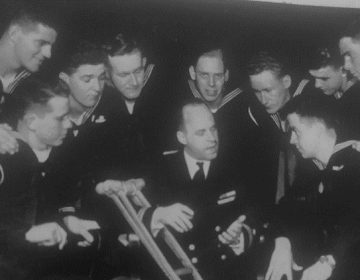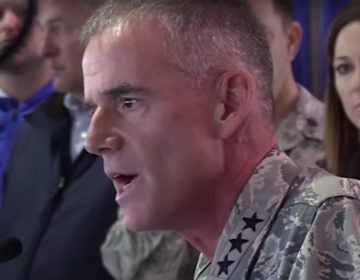Resiliency in today’s military
Since the wars in Afghanistan and Iraq began, the Pennsylvania National Guard has seen 30,000 individual deployments, many for multiple tours of duty. Such a schedule of frequent rotations has put a tremendous strain on our forces. For the citizen soldiers of the National Guard, the effect has been to raise the suicide rate to levels where organization-wide intervention was necessary.
The training room in the large brick building in Sellersville, Pa., looks like a hundred other such rooms: rows of tables and chairs facing a screen flashing Powerpoint slides, motivational posters promoting the organization’s mission and core beliefs hanging on neutral colored walls.
In this room, in the Pennsylvania National Guard Armory, home to the 228th Brigade Support Battalion, you’ll find no jeans, golf shirts, or bored expressions. Participants wear perfectly pressed uniforms, maintain a military bearing, and give the instructor their full attention, an outcome, no doubt, not only of Army discipline but of a deep understanding of the seriousness of the subject: resilience training, identification of soldiers exhibiting signs of stress along with intervention for anyone thought to be at risk of attempting suicide.
This day, soldiers who have been chosen or have volunteered to become resiliency trainers are working their way through the 440-page “Master Resilience Training Manual.” Lessons range from the interpersonal to the introspective: the ability to identify and leverage people’s character strengths; developing clear assertive communications skills; analysis of the poem “Invictus,” made famous by the movie of the same name about the first years of the presidency of Nelson Mandela:
In the fell clutch of circumstanceI have not winced nor cried aloud.Under the bludgeonings of chance My head is bloody, but unbowed.
That “clutch of circumstance” has now held our war-fighters and their families in its grip for 11 years. Since the wars in Afghanistan and Iraq began, the Pennsylvania National Guard has seen 30,000 individual deployments, many for multiple tours of duty. Such a schedule of frequent rotations has put a tremendous strain on our forces. For the citizen soldiers of the National Guard, the effect has been to raise the suicide rate to levels where organization-wide intervention was necessary.
The generally accepted definition of resilience is the ability to thrive in adverse circumstances. Developed by the Positive Psychology Center at the University of Pennsylvania, Resilience Training in the Army has been recognized as an effective means to combat the stress on soldiers and families of not only multiple and prolonged deployments, but also of uncertainty.
Due to the shifting political sands in sub-Asia and the Middle East, some Pa. National Guard units have been on deployment status for nearly two years. Guard Chaplain Doug Knepp of Perkasie, a certified “Master Resilience Trainer,” says that not being deployed, being in a constant state of flux, can be just as stressful on soldiers and their families as being deployed. Knepp says his training has taught him, when someone is exhibiting warning signs of extreme stress, to deal with them directly.
“I help them get the poison out,” says Knepp. “I ask them, why do you want to die?”
One Pa. National Guardsman, who asked not to be identified, feels the training saved his life. Attached to a battalion headquartered in Scranton/Wilkes Barre, he says, “I do not bear the physical scars of war … What I do deal with are the mental scars of war: the flashbacks, the nightmares, and the pain of loss. After returning home from my second tour of duty, my life went downhill quickly. The anger, pain and the tears would not go away. I sought help, but it wasn’t enough. I began drinking in a way that was detrimental to me and my family. I lashed out at everything around me and everyone who was important to me. I hated people, I hated life, and I hated myself. Now, every day I think of my training. I am thankful to be alive.”
According to a study conducted by the U.S. Army in December of 2011, master resilience training is working. On the Army’s official website, Brig. Gen. Jim Pasquarette, program director of comprehensive soldier fitness, said, “I believe this is something we’re going to have forever, similar to physical training. I think in the future, even under this budget, we’re going to fund it. We believe this will save us money through prevention [because] it helps our soldiers, family members and Department of the Army civilians deal with adversity in their life and — more importantly — thrive in their lives.”
To be a soldier in today’s full-time military, reserves, and National Guard is to be constantly challenged, first to survive as a warrior and then to thrive as a person. To do so, they indeed must learn resilience — to paraphrase “Invictus,” to be the masters of their fate and the captains of their soul. Godspeed to them all on their journey.
Pamela Varkony is a nationally recognized speaker, trainer, and writer known for her keen insights on leadership, politics, and current affairs. She resides in Allentown, Pa.
Another version of this essay previously ran in The Morning Call.
WHYY is your source for fact-based, in-depth journalism and information. As a nonprofit organization, we rely on financial support from readers like you. Please give today.




